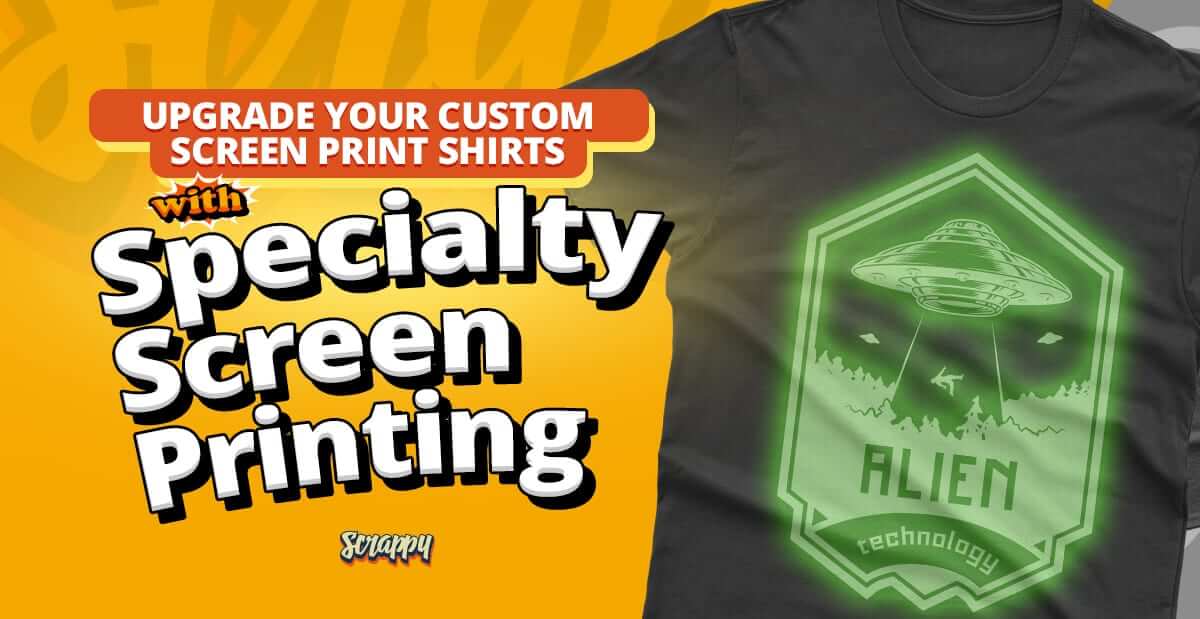High-Volume T-Shirt Printing for Schools and Organizations
High-Volume T-Shirt Printing for Schools and Organizations
Blog Article
Screen Printing Uncovered: Every Little Thing You Required to Know Regarding Tee Shirt and Garment Printing Techniques
Display printing is an interesting approach that integrates art with technique, offering countless possibilities for imagination. Ready to explore the crucial components that make display printing an art form?
The Basics of Screen Printing: Exactly How It Functions
When you dive right into screen printing, you'll uncover it's both a science and an art. At its core, display printing includes developing a stencil, or display, that permits ink to pass through just in particular locations.
Next, you'll blend your inks and prepare your printing surface area. Placement the display over the textile, after that use a squeegee to push ink through the screen onto the garment. This procedure calls for precision, as you want clear, vibrant prints. After printing, you'll heal the ink with warmth, guaranteeing it complies with the textile and lasts through washes. Each action is vital, and understanding them will elevate your display printing skills, transforming simple garments into special, expressive items.
Types of Display Printing Techniques
As soon as you realize the essentials of display printing, it's time to discover the numerous strategies that can boost your layouts. One preferred method is standard screen printing, where ink is pushed through a stenciled screen. This strategy is terrific for strong, lively shades. There's water-based ink printing, which supplies a softer feel and is eco-friendly, but it requires a various technique to treating.
One more alternative is plastisol printing, known for its durability and brilliant colors, making it a favored for lots of brand names. Experiment with halftone printing to produce slope effects and detailed layouts.
Essential Devices for Display Printing
To achieve spectacular results in display printing, having the best equipment is basic. You'll need a durable screen printing frame, which holds the mesh that transfers your design onto the garment. Next, spend in high-quality mops; these are vital for using ink uniformly across the display.
Selecting the Right Inks and Materials
When selecting inks and materials for display printing, you require to think about the kind of ink that functions finest for your task. Believe concerning material compatibility to assure your designs look last and wonderful lengthy. Also, check out environment-friendly ink choices to make your printing process extra sustainable.
Kinds of Display Inks
Selecting the appropriate screen ink is vital for achieving lively, long lasting prints that meet your project's needs. There are numerous kinds of display inks to examine. Specialized inks, such as glow-in-the-dark or metallic, can add one-of-a-kind impacts to your styles.

Fabric Compatibility Factors To Consider
Understanding textile compatibility is vital for accomplishing high-quality screen prints, particularly given that different materials react uniquely to numerous inks. Constantly test your inks on example material to guarantee they adhere appropriately and preserve color integrity. Furthermore, maintain in mind that textile weight and structure can impact the last result, so picking the appropriate ink and material combo is important for your job's success.
Eco-Friendly Ink Options
Eco-friendly inks are becoming a prominent choice for display printers that want to decrease their environmental impact while preserving quality. When picking inks, consider water-based inks, which are less dangerous and much easier to tidy up compared to conventional solvents. These inks bond well with textiles, supplying lively results without poisonous chemicals. You may additionally discover eco-solvent inks that make use of fewer unpredictable natural substances (VOCs), making them a safer option for both your health and wellness and the earth.
Additionally, look for inks made from eco-friendly resources, such as soy or vegetable-based alternatives. By picking the appropriate inks and materials, you'll not only produce stunning designs yet likewise add to an extra lasting printing procedure. Make the switch, and your prints will certainly show your dedication to the setting!
Preparing Your Design for Display Printing

Submit Format Requirements
To guarantee your layout looks dynamic and sharp on fabric, you'll require to pay very close attention to submit format demands for display printing. Start with vector data like AI or EPS, as they can be scaled without shedding top quality. If you make use of raster images, choose high-resolution data, such as TIFF or PNG, preferably at 300 DPI. Avoid utilizing JPEGs, as they can lose clarity when resized. Make sure your design has a clear background to prevent unwanted white sides on your prints. Finally, keep shade settings in mind; CMYK is common for screen printing, so convert your RGB designs as necessary. By adhering to these guidelines, you'll set your art work up for an effective print.
Shade Separation Strategies
Color separation is an essential step in preparing your layout for display printing, and mastering it can significantly improve your print top quality. You'll need to damage your style right into specific colors, as each shade requires a different display throughout printing. This accuracy not only guarantees exact color representation yet additionally improves the printing procedure.
Resolution and Size
Achieving the most effective results in screen printing begins with guaranteeing your layout has the appropriate resolution and dimension. Preferably, your art work should go to the very least 300 DPI (dots per inch) for sharp, clear prints. If you use reduced resolution, your last product could look less than professional and pixelated.
When it pertains to dimension, think about the measurements of your print area. Layout your art work to match the final print size, preferably developing it in the actual dimensions you'll be printing. In this manner, you'll avoid any kind of unexpected scaling concerns.
Constantly check your style in both vector and raster styles. Vector graphics can be scaled without losing quality, making them excellent for screen printing. Preparing appropriately will assure your design looks impressive on every garment!
Step-by-Step Display Printing Refine
Screen printing is a dynamic process that enables you to produce vibrant styles on numerous surface areas. To get started, you'll need a screen, emulsion, and your chosen ink.
Pour ink onto the screen and use a squeegee to press the ink with the stencil onto the textile. Raise the screen thoroughly and let the print dry. You have actually effectively screen published your design.
Tips for Successful Screen Printing Projects
While you're diving right into your screen printing jobs, bear in mind that preparation is crucial to success. Start by gathering all your materials-- inks, squeegees, garments, and displays. A clean work area aids avoid undesirable errors, so clean up prior to you begin.
Following, validate your art work is high-resolution and appropriately sized for your garment. Examine your display for correct exposure and clean it extensively to stay clear of spots. When blending your inks, follow the maker's guidelines to achieve the best uniformity.
Throughout printing, apply even pressure with your squeegee for regular results. Do not rush; take your time to verify each print meets your standards. After printing, allow your garments dry entirely prior to taking care of or packaging them.
Finally, constantly keep custom screen printing an example of your benefit future reference. This means, you can assess your progress and enhance your strategies with time. Delighted printing!

Regularly Asked Concerns
The length of time Does It Take to Establish a Screen Printing Work?
Establishing a screen printing work normally takes about half an hour to an hour. You'll prepare the displays, mix inks, and change journalism. The time varies based upon intricacy and experience, so remain arranged!
Can I Publish on Different Textile Types Utilizing the Same Strategy?
Yes, you can print on different textile kinds utilizing the very same strategy, yet you'll need to change your inks and setups. Some fabrics take in ink in different ways, so trying out guarantees the very best outcomes for every product.
What Are Typical Blunders to Prevent in Screen Printing?
When screen printing, prevent common blunders like using the incorrect ink, ignoring correct direct exposure times, or skipping pre-press checks. Always examine your setup and keep clean screens to guarantee quality results each time.
Exactly How Can I Effectively Tidy and Maintain My Display Printing Devices?
To correctly tidy and maintain your display printing equipment, you must frequently clean displays with proper solvents, inspect mops for wear, and assure all tools are stored dust-free and completely dry. Uniformity prevents expensive fixings and improves performance.
Is Display Printing Environmentally Friendly Compared to Other Methods?
Screen printing can be a lot more eco friendly than various other techniques, particularly if you make use of water-based inks and eco-conscious products. By choosing lasting supplies and techniques, you minimize waste and decrease your influence on the planet.
Display Printing Uncovered: Every Little Thing You Required to Know Regarding Tee Shirt and Garment Printing Methods
At its core, screen printing involves producing a stencil, or display, that permits ink to pass via just in details locations. Position the display over the material, then utilize a squeegee to push ink through the screen onto the garment. One preferred method is standard screen printing, where ink is pressed with a stenciled screen.When choosing inks and products for display printing, you need to take right into account the type of ink that works ideal for your job.
Report this page